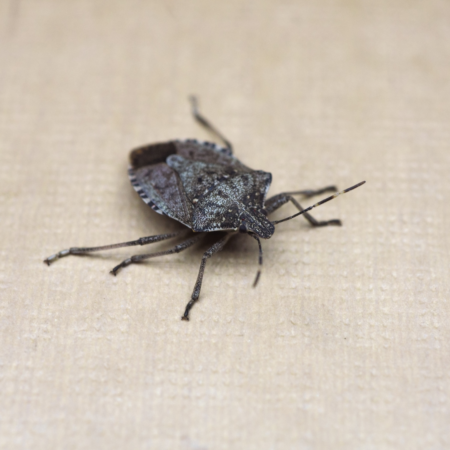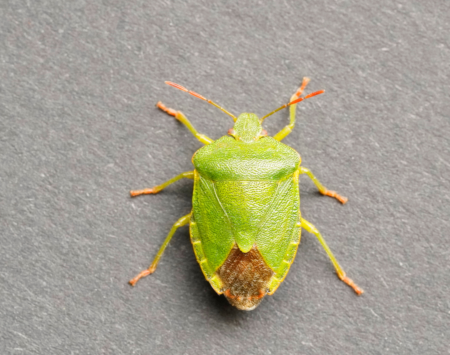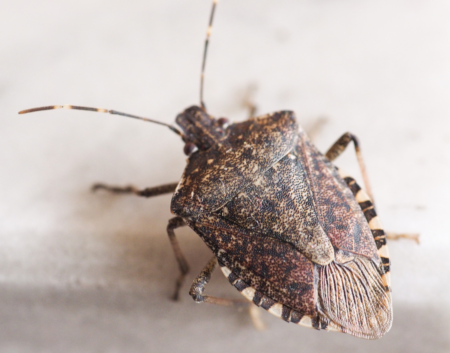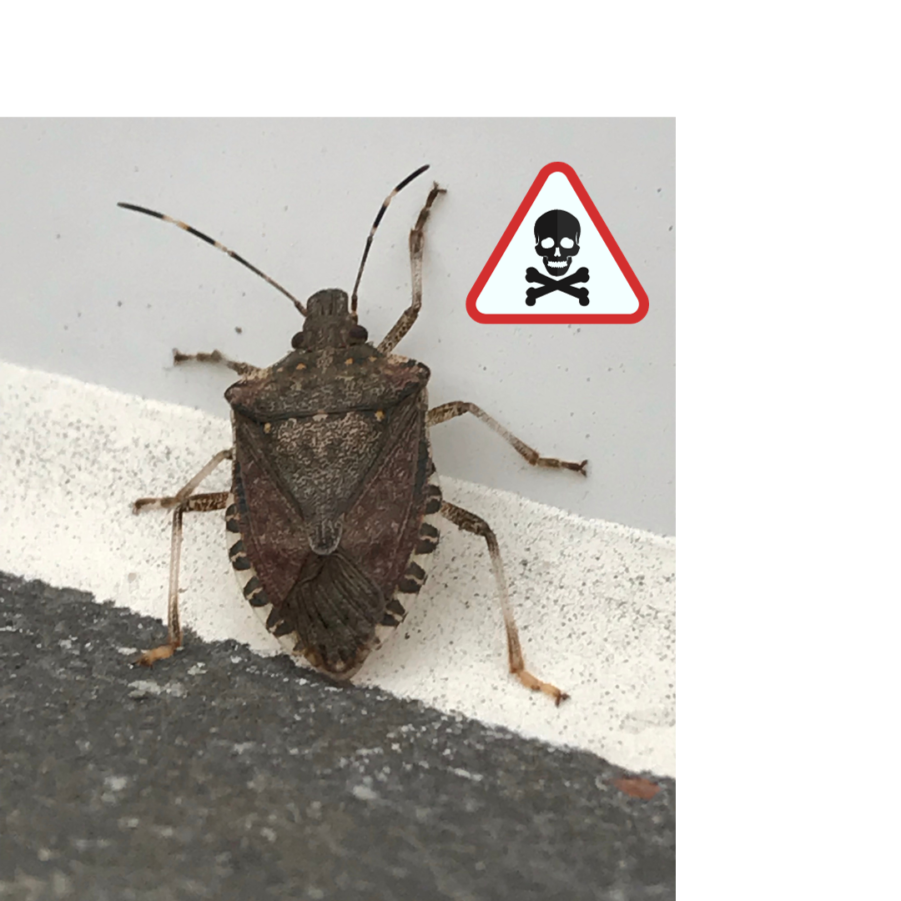Fall is the time of year when I start hearing from homeowners about insect home invasions. My previous post, Why are there so many bugs in my house? explains this issue specifically. Stink bugs are among the most common unwelcome guests in peoples’ homes, and with a name like that, they are cause for concern. Folks frequently ask, “Are stink bugs poisonous?” or “Will they smell up my apartment?”
In this Naturalist Answers post, let’s explore this topic and learn more about these neat insects.
What is a stinkbug?

Stink bugs are insects in the order Hemiptera, a larger group known as the “true bugs”. (Want to more about the most common insect orders? Check out this post!). Within this order, stinkbugs make up a family called the Pentatomidae, which means “five segments”. This refers to the number of sections made up by the joint sin their antennae. However, unless you’re a real whiz with a magnifying glass, their antennae aren’t the first thing you’ll notice about stinkbugs.
Stink bugs are medium-sized (often 1/4-1/2 inch long), flat insects with a hexagon-shaped body. Their blocky look is why many naturalists, especially in the U.K., also call them “shield bugs”. Most common stink bug species are dull colors like tan or brown, occasionally with small greenish areas. However, some species like the Green stinkbug (Chinavia halaris) are vibrant by comparison.
What do stink bugs eat?

The majority of stinkbug species are herbivorous, and use their piercing mouthparts to suck fluid from plants. There are a small number of predaceous species that will bite other invertebrates, most likely soft-bodied nymphs or larvae. Because of their eating habits, some stinkbug species are crop pests. The brown marmorated stinkbug (Halyomorpha halys), an invasive species introduced from Asia, is one example. The U.S. Department of Agriculture considers it a major pest, and has ongoing efforts to combat its spread. Want to find out more about invasive species and why they are bad for the environment? Check out this post.
Do stink bugs actually stink?
Well, sort of. That is, when they want to! Just like skunks and millipedes, stinkbugs secrete defensive chemicals from their bodies when they perceive a threat. If you manage to frighten a stink bug (in my experience, it’s not that easy!) you may be in for a surprise. These insects can release a fine spray of smelly chemicals from their abdomen toward an attacker. If you accidentally squish one in your home, you may also notice the odor released from their bodies.

Interestingly, the specific smell that they release varies by species. For example, one species I removed from my house in Montana gave off an almost minty, astringent smell. Fascinatingly, some stink bug species change their scent as they molt and grow over time! This may be because they face different predators, or have different social behaviors, as nymphs versus adults. Stink bugs also queue in on one another’s stink, so if one bug sprays, others will likely flee the scene. I can’t blame ’em!
So, are stink bugs poisonous?
Not really, no. Their defensive chemicals are meant to taste and/or smell awful and repel attackers. Although some species’ spray may contain small amounts of cyanide-based chemical compounds, these concentrations and the amount of spray are very low. Furthermore, the vast majority of species don’t contain strongly toxic chemicals in their stinky cocktail.
Are stink bugs poisonous to dogs?

Also no! That being said, your dog probably won’t be very happy if it takes a stink bug spray in the mouth. These chemicals are intended to be highly unpleasant and irritating. They could make your dog drool more than usual, or repeatedly lick its chops. In severe cases the dog may throw up, although I haven’t observed this the few times I have watched friends dogs eat them.
Why are there stink bugs in my house?
Like some other bugs that survive the winter, stink bugs start looking for warm, dry places to hide during Fall. As average temperatures begin to Fall, they are likely to seek out the warmest, safest-looking places they can find. The result? You might suddenly find a lot of bugs in your house. The same goes for the Spring, where warmer temperatures will spur those bugs that got into your home to march on outside. Stinkbugs typically gain access to your house via open doors and windows, as well as broken screens.

Stink bugs are also commonly attracted to outdoor lights. If you find stink bugs in your home during summer, this might be the reason why. If you’re wondering why bugs are so attracted to light, check out this post!
For help identifying some other common household bugs, check out Is this bug in my house dangerous? and household insects that you should know.
What should I do if there’s a stinkbug in my house?
Although stinkbugs are capable of biting, they rarely do so unless handled very roughly. They can be handled very similarly to other insects. In short, it’s easy to remove a stink bug from your house, whether you grab them with a tissue, pick them up with your bare hands, or use the “card and cup method”.
For more info on stink bugs and some advice on designing traps to get them out of your house, check out this Nature Guys Podcast episode below:
Thanks for reading “Are stink bugs poisonous?”
When was the last time you found a stink bug indoors? Did it have a strong smell? Let us know in the comments! If you enjoyed this post, please support Gulo in Nature by sharing this post and following us on Social Media. If you have any questions that you’d like answered by a nature expert, drop us a line using the Contact Page.

